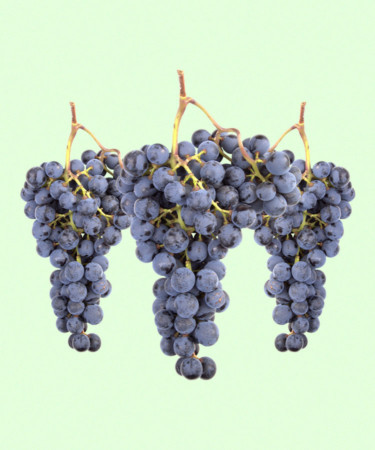Pinot Noir is seldom known to share the spotlight. Aside from accompanying Pinot Meunier and Chardonnay in Champagnes, it’s rarely blended in still wines. Other grapes like Zinfandel, Merlot, and Shiraz often make an appearance in red blends — why doesn’t Pinot Noir play well with others?
For starters, growing the dark red varietal is a true labor of love. The thin-skinned, tightly-bunched grapes require specific conditions to thrive — like clay- or limestone-based soils and lots of sun exposure — and navigating this balance can be both tricky and expensive for producers. Though it is native to the Burgundy region of France, Pinot Noir is grown globally, and its flavor profiles can vary greatly across regions. But not every climate is well-suited for the grape.
For cultivators in particular, Pinot Noir can be a problem child. The grapes are a picky bunch, often demanding a cool climate or added protection in warm environments. They can also be extremely sensitive to hazards such as rot, frost, and excessive heat.
The extra effort required is not for nothing, though: The outcome of this particular attention to detail produces a balanced, medium-bodied wine that’s beloved around the world. Typically, Pinot Noir is enjoyed as a single varietal wine, without the addition of other grapes. Why dilute the character of the tender, pricy wine by blending it?
For some producers, it’s in an effort to lower their prices. Pinot Noirs on the less expensive side might also include Syrah, Merlot, or other blending varieties to add color and flavor complexity to the more delicate Pinot. In the U.S., producers can actually add up to 25 percent of blending grapes to a Pinot Noir, without being required to note this on the label. In these cases, Pinot goes undercover as a blend but this does not go unnoticed in the final product.
Some brands have already made the leap to create wines labeled “Pinot Noir blends.” Smith Devereux’s Mischief bottle includes small amounts of Syrah, Cabernet Sauvignon, and Merlot in its take on Pinot Noir. Others have tackled a blend of soft Pinot Noir and boldly tannic Cabernet Sauvignon, according to Wine-Searcher.
Pinot Noir has true main character energy. And, if you’re looking to try a new bottle, check out our list of the best Pinot Noirs of 2022.
